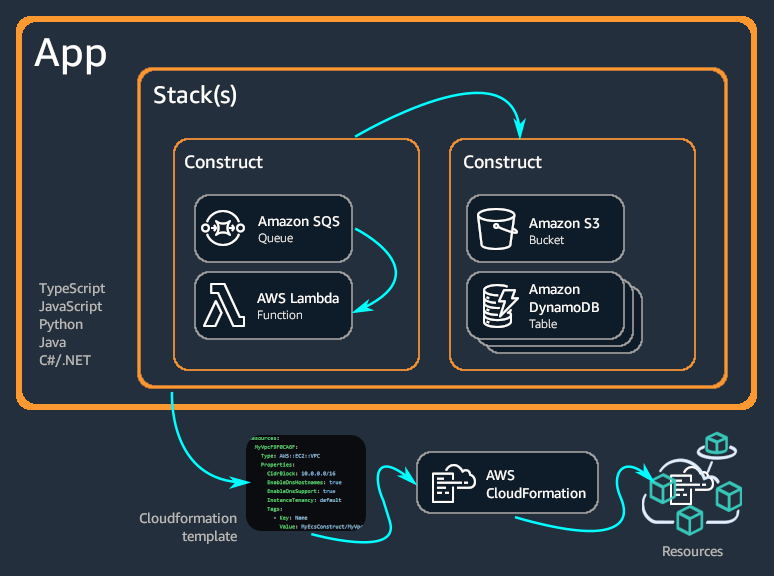Type Inference vs. Explicit Types in TypeScript: Are You Doing It Right?
TypeScript, as a superset of JavaScript, has gained popularity for its robust type system, which enhances code maintainability and catches errors early. One common question developers face is: when should you rely on TypeScript’s type inference, and when should you explicitly declare types? In this article, we’ll dive into how type inference works, the benefits of explicit types, and practical tips for balancing flexibility and safety in your projects. Type Inference: TypeScript’s Smart Assistant TypeScript’s type inference is one of its standout features. When you initialize a variable, TypeScript automatically deduces its type without requiring explicit annotations. For example: let message = "Hello, TypeScript!"; // Inferred as string message = 42; // Error: Type 'number' is not assignable to type 'string' Here, message is inferred as a string, and any attempt to assign a different type triggers a compilation error. This inference extends beyond primitives to more complex cases, like function return types: function add(a: number, b: number) { return a + b; // Inferred as number } const result = add(5, 3); // result is number Type inference shines by reducing boilerplate while maintaining type safety. However, it’s not foolproof, especially in ambiguous or intricate scenarios. Explicit Types: Taking Control of Your Code While inference is powerful, explicit type declarations offer greater clarity and control in certain situations. Consider this example: let userId = "123"; // Inferred as string userId = 456; // Error, but what if we want to allow numbers? If your intent is for userId to support both strings and numbers, inference alone won’t suffice. You’d need an explicit union type: let userId: string | number = "123"; userId = 456; // Valid Explicit types are especially valuable for function signatures. Take an API request function: async function fetchData(url) { const response = await fetch(url); return response.json(); } TypeScript infers the return type as Promise, which isn’t very helpful. To make the return type explicit and useful: interface User { id: number; name: string; } async function fetchData(url: string): Promise { const response = await fetch(url); return response.json(); } Now, consumers of fetchData know exactly what to expect, improving safety and developer experience. Finding the Balance: Practical Guidelines So, how do you strike a balance between inference and explicit types? Here are some actionable tips: 1. Let Inference Handle Simple Cases For local variables with clear initial values, lean on inference: const count = 10; // number const items = ["apple", "banana"]; // string[] Adding explicit types here would just clutter the code. 2. Use Explicit Types for Function Signatures Functions are critical interfaces in your code. Explicitly typing parameters and return values boosts readability and prevents misuse: function greet(name: string): string { return `Hello, ${name}!`; } Even if the return type is inferable, declaring it serves as built-in documentation. 3. Enforce Explicit Types for Complex or Dynamic Data When dealing with external data (like API responses) or complex structures, explicit types are non-negotiable: interface Config { apiKey: string; timeout?: number; } const config: Config = { apiKey: "xyz123" }; This ensures your code adheres to the expected shape. 4. Leverage Inference with as const for Precision If you need stricter inference, use as const to lock in literal types: const colors = ["red", "blue"] as const; // readonly ["red", "blue"] This is handy when exact values matter. Beware the Over-Annotation Trap Some developers overcompensate by annotating everything, which can backfire: If you need stricter inference, use as const to lock in literal types: let name: string = "Alice"; // Unnecessary—inference is enough Over-annotation adds maintenance overhead and dilutes the elegance of TypeScript’s type system. The goal is to let the compiler work for you, not against you. Conclusion TypeScript’s type inference and explicit types each have their strengths. Use inference for simplicity, explicit types for clarity, and you’ll strike a balance that keeps your code both flexible and safe. As a developer, I’ve found that the best approach is to treat the type system as a partner—not a chore. How do you use TypeScript’s type system in your projects? Share your thoughts or questions in the comments below!

TypeScript, as a superset of JavaScript, has gained popularity for its robust type system, which enhances code maintainability and catches errors early. One common question developers face is: when should you rely on TypeScript’s type inference, and when should you explicitly declare types? In this article, we’ll dive into how type inference works, the benefits of explicit types, and practical tips for balancing flexibility and safety in your projects.
Type Inference: TypeScript’s Smart Assistant
TypeScript’s type inference is one of its standout features. When you initialize a variable, TypeScript automatically deduces its type without requiring explicit annotations. For example:
let message = "Hello, TypeScript!"; // Inferred as string
message = 42; // Error: Type 'number' is not assignable to type 'string'
Here, message is inferred as a string, and any attempt to assign a different type triggers a compilation error. This inference extends beyond primitives to more complex cases, like function return types:
function add(a: number, b: number) {
return a + b; // Inferred as number
}
const result = add(5, 3); // result is number
Type inference shines by reducing boilerplate while maintaining type safety. However, it’s not foolproof, especially in ambiguous or intricate scenarios.
Explicit Types: Taking Control of Your Code
While inference is powerful, explicit type declarations offer greater clarity and control in certain situations. Consider this example:
let userId = "123"; // Inferred as string
userId = 456; // Error, but what if we want to allow numbers?
If your intent is for userId to support both strings and numbers, inference alone won’t suffice. You’d need an explicit union type:
let userId: string | number = "123";
userId = 456; // Valid
Explicit types are especially valuable for function signatures. Take an API request function:
async function fetchData(url) {
const response = await fetch(url);
return response.json();
}
TypeScript infers the return type as Promise, which isn’t very helpful. To make the return type explicit and useful:
interface User {
id: number;
name: string;
}
async function fetchData(url: string): Promise<User> {
const response = await fetch(url);
return response.json();
}
Now, consumers of fetchData know exactly what to expect, improving safety and developer experience.
Finding the Balance: Practical Guidelines
So, how do you strike a balance between inference and explicit types? Here are some actionable tips:
1. Let Inference Handle Simple Cases
For local variables with clear initial values, lean on inference:
const count = 10; // number
const items = ["apple", "banana"]; // string[]
Adding explicit types here would just clutter the code.
2. Use Explicit Types for Function Signatures
Functions are critical interfaces in your code. Explicitly typing parameters and return values boosts readability and prevents misuse:
function greet(name: string): string {
return `Hello, ${name}!`;
}
Even if the return type is inferable, declaring it serves as built-in documentation.
3. Enforce Explicit Types for Complex or Dynamic Data
When dealing with external data (like API responses) or complex structures, explicit types are non-negotiable:
interface Config {
apiKey: string;
timeout?: number;
}
const config: Config = { apiKey: "xyz123" };
This ensures your code adheres to the expected shape.
4. Leverage Inference with as const for Precision
If you need stricter inference, use as const to lock in literal types:
const colors = ["red", "blue"] as const; // readonly ["red", "blue"]
This is handy when exact values matter.
Beware the Over-Annotation Trap
Some developers overcompensate by annotating everything, which can backfire:
If you need stricter inference, use as const to lock in literal types:
let name: string = "Alice"; // Unnecessary—inference is enough
Over-annotation adds maintenance overhead and dilutes the elegance of TypeScript’s type system. The goal is to let the compiler work for you, not against you.
Conclusion
TypeScript’s type inference and explicit types each have their strengths. Use inference for simplicity, explicit types for clarity, and you’ll strike a balance that keeps your code both flexible and safe. As a developer, I’ve found that the best approach is to treat the type system as a partner—not a chore.
How do you use TypeScript’s type system in your projects? Share your thoughts or questions in the comments below!







































































































































































![[The AI Show Episode 143]: ChatGPT Revenue Surge, New AGI Timelines, Amazon’s AI Agent, Claude for Education, Model Context Protocol & LLMs Pass the Turing Test](https://www.marketingaiinstitute.com/hubfs/ep%20143%20cover.png)

































































































































![From drop-out to software architect with Jason Lengstorf [Podcast #167]](https://cdn.hashnode.com/res/hashnode/image/upload/v1743796461357/f3d19cd7-e6f5-4d7c-8bfc-eb974bc8da68.png?#)








































































































.jpg?#)
































_ArtemisDiana_Alamy.jpg?#)


 (1).webp?#)





































































-xl.jpg)













![Yes, the Gemini icon is now bigger and brighter on Android [U]](https://i0.wp.com/9to5google.com/wp-content/uploads/sites/4/2025/02/Gemini-on-Galaxy-S25.jpg?resize=1200%2C628&quality=82&strip=all&ssl=1)










![Apple Rushes Five Planes of iPhones to US Ahead of New Tariffs [Report]](https://www.iclarified.com/images/news/96967/96967/96967-640.jpg)
![Apple Vision Pro 2 Allegedly in Production Ahead of 2025 Launch [Rumor]](https://www.iclarified.com/images/news/96965/96965/96965-640.jpg)




































































































































